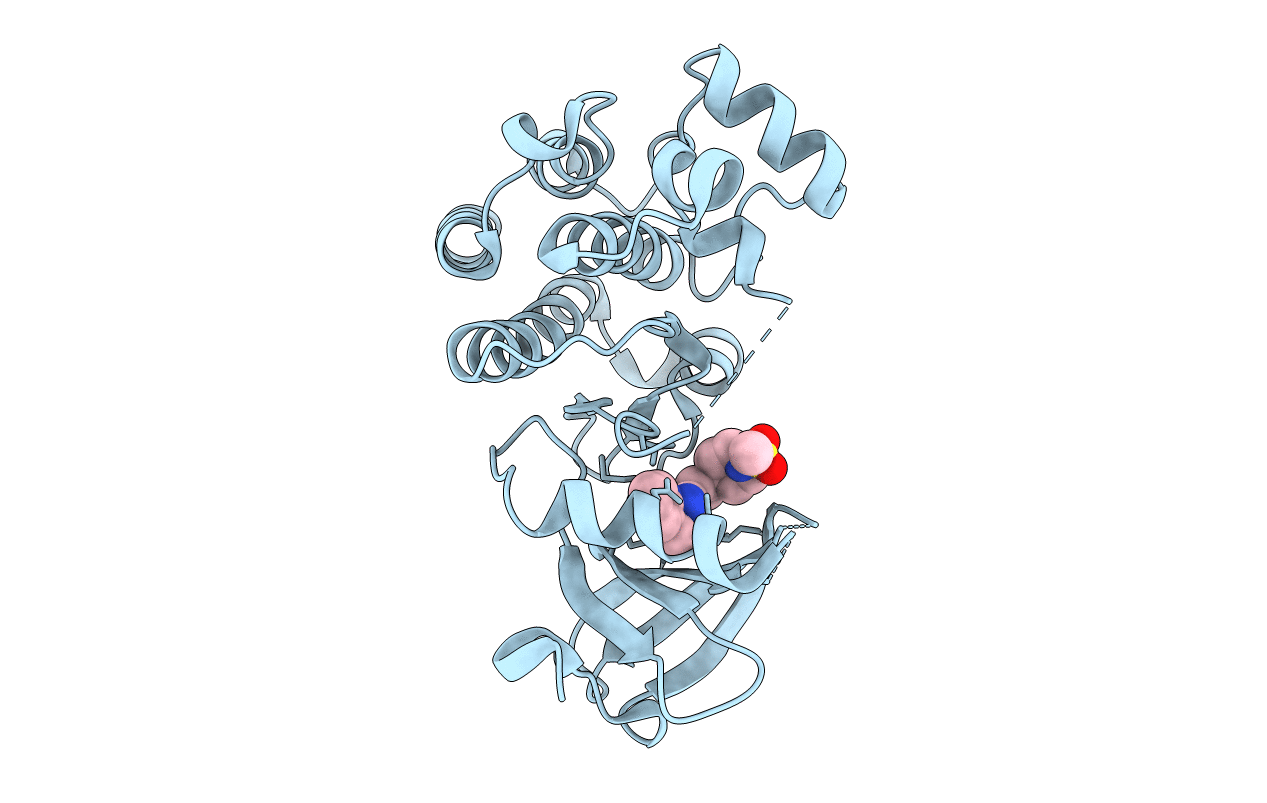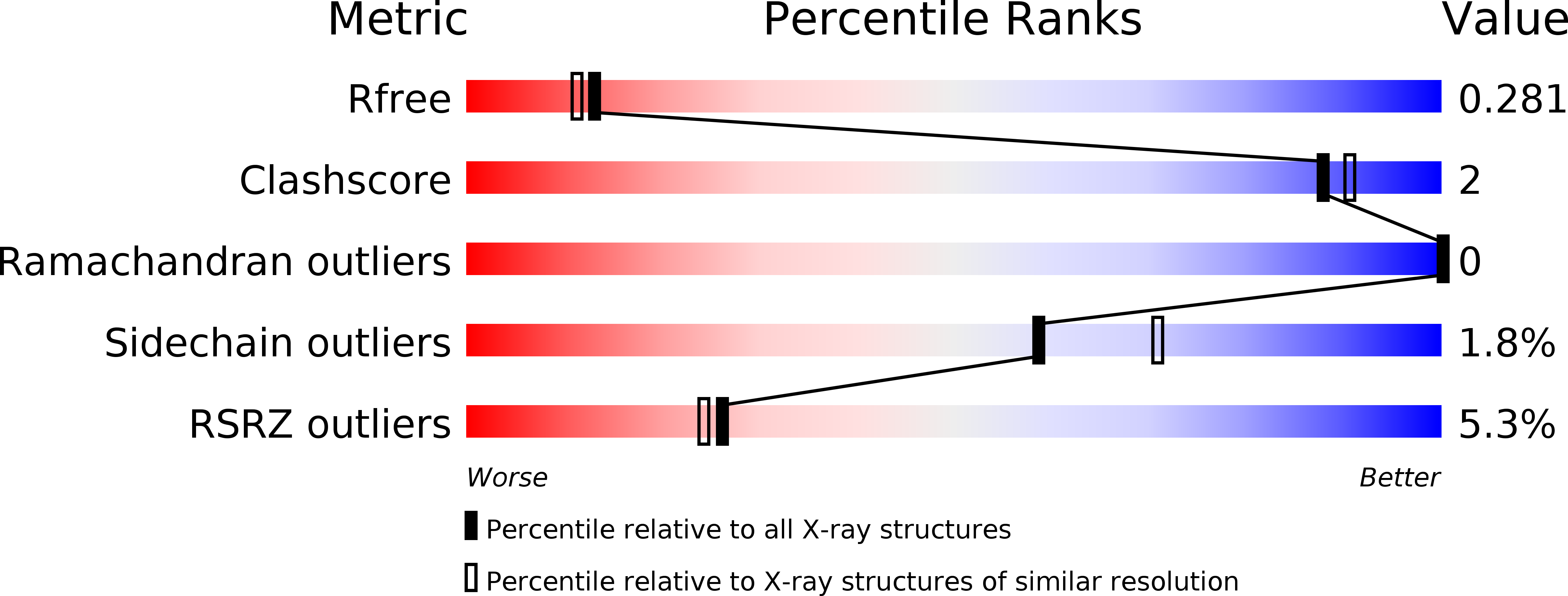
Deposition Date
2010-11-08
Release Date
2011-01-12
Last Version Date
2023-09-06
Entry Detail
PDB ID:
3PIZ
Keywords:
Title:
Crystal structure of BTK kinase domain complexed with (5-Amino-1-o-tolyl-1H-pyrazol-4-yl)-[3-(1-methanesulfonyl-piperidin-4-yl)-phenyl]-methanone
Biological Source:
Source Organism:
Homo sapiens (Taxon ID: 9606)
Host Organism:
Method Details:
Experimental Method:
Resolution:
2.21 Å
R-Value Free:
0.28
R-Value Work:
0.22
R-Value Observed:
0.22
Space Group:
P 21 21 2


